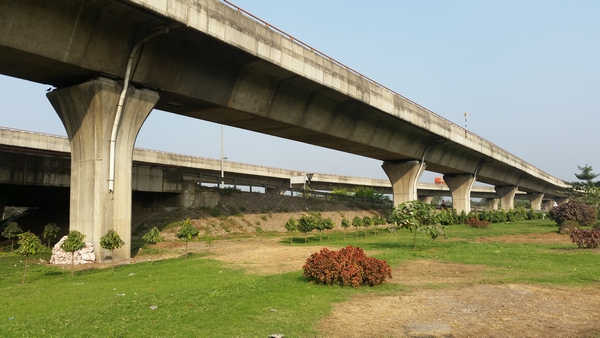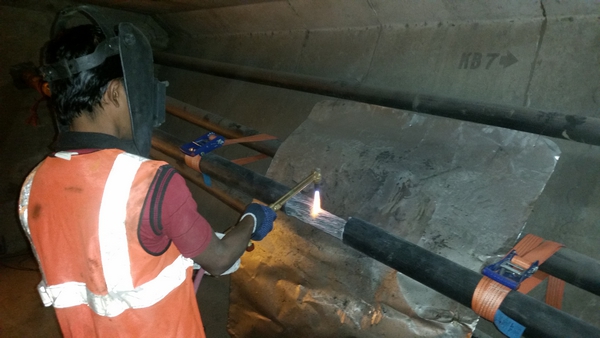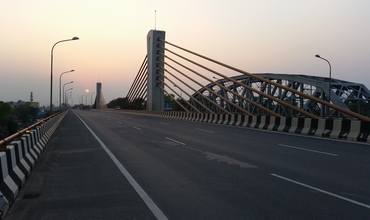External PT Repair Works,
Kolkata, West Bengal, INDIA
Repair works including inspection, maintenance and/or replacement of external post-tensioning tendons
Concessionaire: SVBTC
Post-Tensioning systems during initial construction: VSL and BBR
Role of ELIAS: Project Director
Project Description
The Second Vivekananda bridge (also called “Nivedita Setu” or “Second Vivekananda Setu”) is a multi-span extradosed bridge that was built between 2004 and 2007 over Hooghly River connecting Howrah with Kolkata. It runs parallel to and about 50 m downstream of the old Vivekananda bridge opened in 1932.
The 6.1km long structure of the Second Vivekananda bridge involves:
– 9 main spans
– 113 ramp spans (also called approach spans) of about 35 m long each

Ramp spans of Second Vivekananda bridge
About the repair works of 2015-2016
The construction of Second Vivekananda Bridge was completed in 2007. At this time, companies VSL and BBR shared the scope of works for Post-Tensioning.
VSL was in charge of:
– Supply of internal and external PT material for approach spans
– Supply of PT material for extrados PT for main spans
– Installation on site including grouting
BBR carried out the following scope:
– Supply of internal and external PT material for main spans (except extrados PT)
The bridge includes more than 1,000 external post-tensioning tendons, made up of between 12 and 19 strands of 0.6” diameter, with lengths that vary from 35m (ramp spans) to 145m (main spans).
VSL was appointed as specialist contractor for inspection, repair and replacement works for the external post-tensioning tendons from 2015 to 2016.

External PT replacement works
In the middle of 2015, these works became necessary following the discovery during a general inspection of a completely failed tendon together with apparent defects in several other tendons. The concessionaire SVBTC launched emergency repair measures, including the immediate replacement of the affected tendons. In addition, intrusive inspections on all the ducts and grout caps were carried out. Inspections of the bridge revealed that several of these external post-tensioning tendons broke down due to failed grouting operations for filling the tendons and their permanent caps during initial construction.
The work included the replacement of 2,350 plastic anchorage caps with new, permanent galvanized steel caps filled with a corrosion-inhibiting grease. Other tasks included using corrosion-inhibiting grease and welded PE repair patches to seal the inspection openings and any voids that did not show signs of corrosion. Full replacement took place of all tendons affected by corrosion. Only one traffic lane was closed over the affected span while some critical activities took place, such as grouting. The rest of the time, the structure could be kept fully open to traffic.



